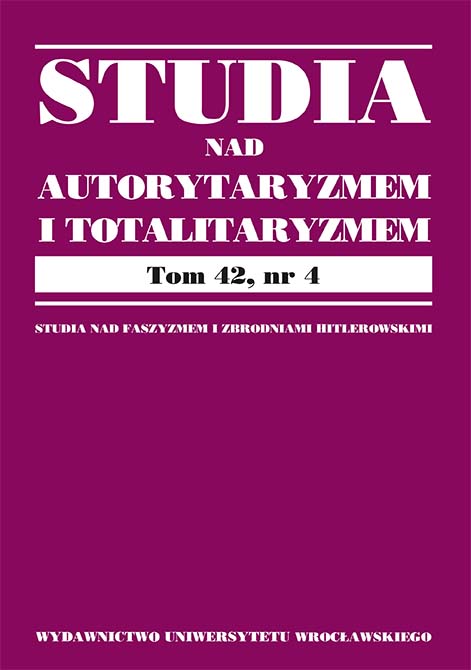

Articles

The study is a voice in the debate on adopting an optimal model of response to offences. Considerations in this area are accompanied by a historical approach to the development of the misdemeanour law which presents an interesting picture of original normative proposals articulated in the interwar period, then in the authoritarian times, and finally in the contemporary period. Their in-depth analysis enables us to distinguish stages which are typical for the misdemeanour law, i.e. the first stage encompassing the years from 1919 to 1951, reflecting an administrative standard of investigating misdemeanour cases, changing gradually into a mixed model. Another stage commencing in 1952 and lasting until 1990, representing an intermediate model between the administrative and court systems, distinguished by the activity of the boards adjudicating in cases concerning misdemeanours, enhanced by the codification of the misdemeanour law dated 1971. Finally, the third stage commencing in 1990, announcing the direction of establishing the misdemeanour law, deepened by entry into force of a comprehensive codification of the criminal law dated 1997, to which the misdemeanour law was strikingly similar, ending with the adoption of a comprehensive adjudicative model in 2001. The presented scheme of the normative activity of the Polish legislator has brought a penal model of the misdemeanour law based on the so-called petty criminal code, i.e. containing material and legal regulations in the misdemeanour law of 1971 and the aforementioned Lawsuit Act of 2001 specifying the scope of cognition of the courts adjudicating in cases concerning misdemeanours.
From a historical perspective, maintaining misdemeanours as part of criminal law and adopting the principles of criminal liability to resolve them can be perceived as acknowledgement of a certain concept of the model in cases concerning misdemeanours and its consistent implementation. Nevertheless, dynamics of the law and its legislative deficiencies have been enforcing the search for new legal solutions counteracting administrative anarchy or criminal anarchy of minor social harmfulness. In particular, it is about their penalisation in the form of administrative torts, i.e. forbidden acts subject to an administrative pecuniary sanction, the construction of which resembles offences or misdemeanours. Despite explicit resemblance, those acts are not classified within a given category; therefore, guarantees relevant for criminal liability are not applied thereto. The existence of this phenomenon in the development of the law undoubtedly updates the question of whether the penal model should be developed further as a part of the misdemeanour law, corresponding in fact to the contemporary model, or if maybe it would be more proper to adopt another direction and create a strictly administrative model of liability for minor forbidden acts.
In the public debate and in legal literature, one can obviously find various statements of practitioners and representatives of science referring to the reform of misdemeanours. Leaving the details of the articulated proposals, the authors of this study are closer to the supporters of the traditional approach to the misdemeanour model which implies that it is correct to base the principles of liability for misdemeanour on the general principles of criminal law. This approach does not exclude the need for amendment measures, but at the moment it rather manifests the lack of belief that a complete change of the model is justified. The necessity to amend the general part of the misdemeanour code, including the catalogue of response methods to misdemeanours, or to update the detailed part covering transformation of some petty offences into administrative torts is, in the authors’ opinion, a sufficiently serious legislative challenge. Treating the misdemeanour law as a separate branch of the law also requires reference to the adopted political and procedural structures as well as changes reported in this area. Taking up this thread, the authors of the study represent a quite unpopular approach of maintaining the court proceedings in the examination of cases concerning misdemeanours. In the case of misdemeanours, we are dealing with minor offences prohibited by the law and subject to a penalty, the imposition of which falls within the competence of a judicial authority and is preceded by the process of determining guilt. Therefore, it is indispensable to maintain the principles of liability aimed at securing the guarantees of the proceedings’ participants, which can only be ensured by the court proceedings. Providing non-judicial authorities with misdemeanours contradicts the aforementioned principles and raises doubts of a constitutional nature. Obviously, such an approach does not release the legislator from the obligation to increase the mechanisms of simplifying and accelerating the proceedings concerning misdemeanours. Apart from the optimisation of the procedural level, one should also consider improving organisational solutions within existing structures. Either way, respect for the existing long-term activities of the legislator speaks in favour of continuing the current misdemeanour law model, assuming of course its rationalisation. The authors emphasise that currently, in the face of legal instability, one may express concern as to the existence of conditions that would enable a change in the approach to misdemeanours.